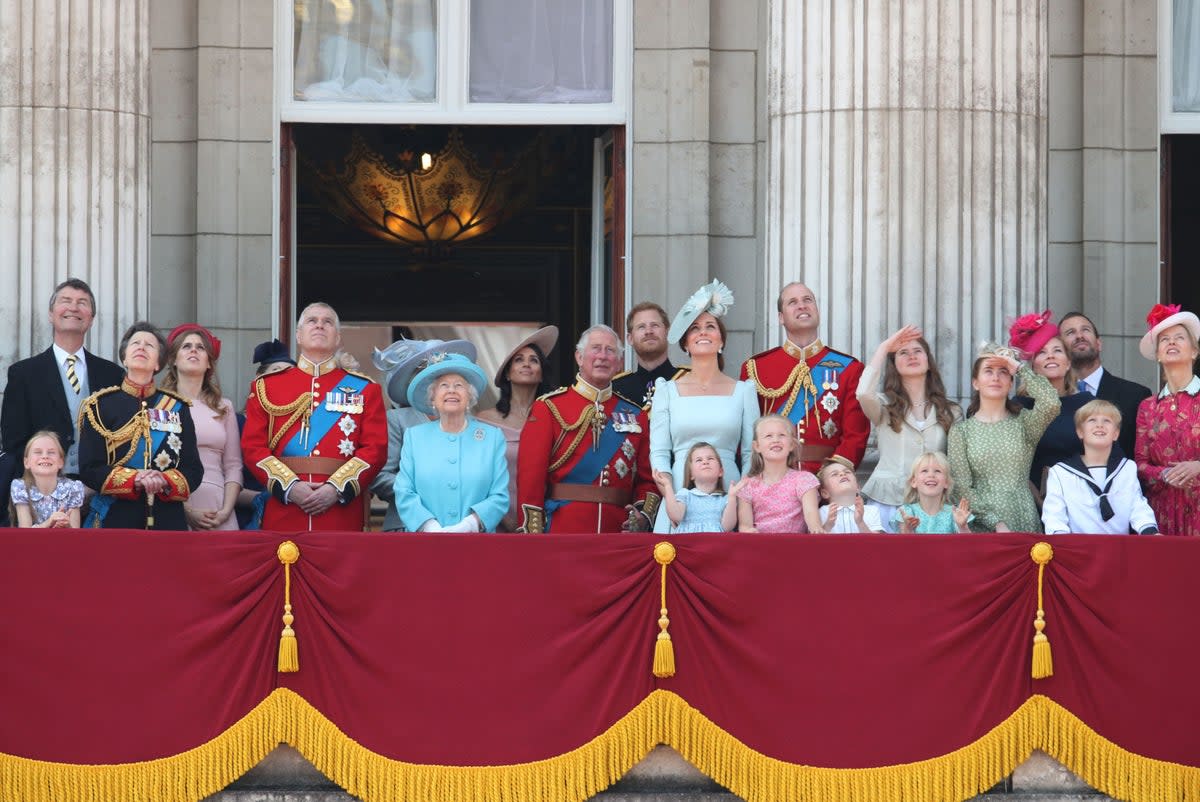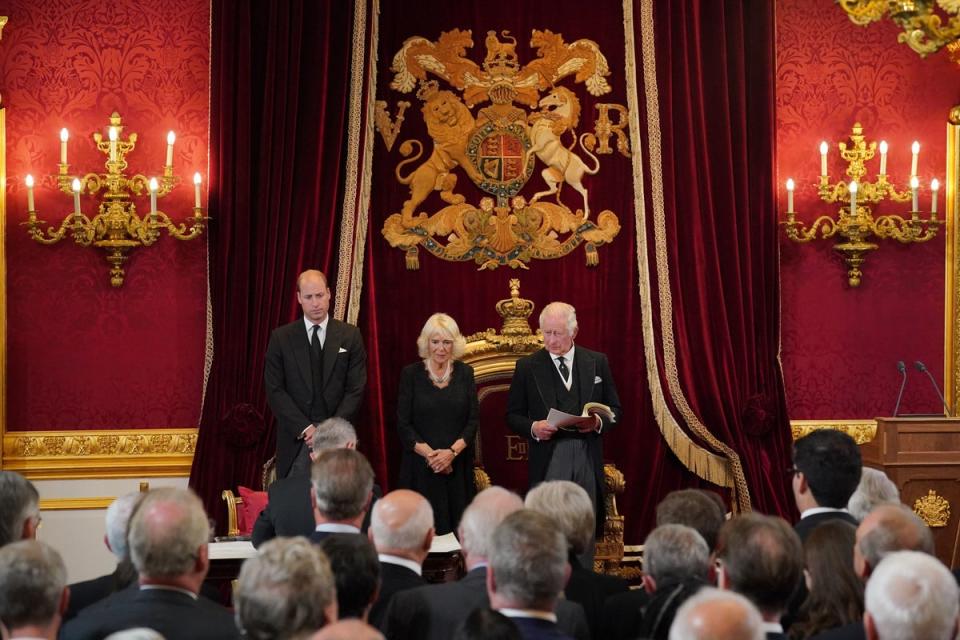Voices: What’s next for the House of Windsor? Reinvention or collapse?

- Oops!Something went wrong.Please try again later.
- Oops!Something went wrong.Please try again later.
- Oops!Something went wrong.Please try again later.
- Oops!Something went wrong.Please try again later.
How should we assess Queen Elizabeth II’s place in history? A mature judgement must depend, of course, on how the House of Windsor evolves. Will it reinvent itself as a post-Elizabethan monarchy, or will her reign prove to be the Windsors’ end? Only time will tell, but there are already grounds for conceding her a place in something more than coffee-table history.
One reason is the remarkable tenacity of the 20th-century British monarchy. The First World War toppled the major dynasties of Europe – the Romanovs, Hohenzollerns and Habsburgs – as revolution spread west from Russia. Next to go, Buckingham Palace feared, would be the House of Windsor (as the House of Saxe-Coburg and Gotha was hurriedly renamed in 1917 when London was being pounded by the Kaiser’s Gotha bombers).
“We stand at the parting of the ways,” warned Lord Esher, a senior courtier. “The monarchy and its costs will have to be justified, in the future, in the eyes of a war-worn and hungry proletariat endowed with a huge preponderance of voting power.”
And yet the Windsors are still with us. In the century following the outbreak of the Great War, Britain had in fact only four monarchs – one of whom (Edward VIII) abdicated after less than a year. The late Queen’s grandfather, George V (1910-36), began reaching out to Britain’s new democracy, especially via his annual Christmas radio broadcast.
Her father, George VI (1936-52), won respect for overcoming his notorious speech impediment, and became a symbol of the nation during the Second World War. And Elizabeth II herself saw out the rest of the 20th century, eventually outstripping Queen Victoria’s 63 years and seven months to become the country’s longest-reigning monarch.
During her reign, she was served by 15 prime ministers, from Winston Churchill to Liz Truss, and she watched 14 presidents pass through Washington. The contribution of the monarchy, especially of Queen Elizabeth, to Britain’s sense of institutional continuity and stability amid a kaleidoscopic world was one essential reason for its survival.
Yet, equally importantly, the Queen ensured that the Windsors moved with the times and adapted the monarchy to a democratic age. She was not herself a natural change-agent, growing up a shy, dutiful girl imbued with a profound sense of family tradition, and her dominant, charismatic mother wanted to cling tightly to the past. But pushing in the opposite direction was her strong-willed husband, a man with modernising instincts and a desire to stamp his own mark on the monarchy – not least by trying to rename it the House of Mountbatten.
A turning point was the retirement in 1968 of the palace’s veteran press secretary, Richard Colville, who had kept the media at arm’s length. He was almost “an anti-press officer”, said one royal secretary. Colville’s successor, William Heseltine, knew that such a position was no longer tenable. Backed by Prince Philip, Heseltine orchestrated the TV documentary Royal Family (1969), intended to sell the Windsors to 1960s Britain. A behind-the-scenes account of a year in the life of the Queen, the programme was watched by at least two-thirds of the British population.
Royal Family began in earnest the monarchy-media mutual manipulation that proved a feature of Elizabeth II’s reign. Central to this process was dynastic reinvention through generational change. 1981 was the first big milestone, when the earnest heir to the throne married a gauche young woman nearly 13 years his junior, who was then transmuted into what one Sun journalist called “the world’s No 1 cover girl”.

In the short term, King Charles III and Diana revitalised the Queen’s reign, but theirs was always a dysfunctional match; her alienation from the court, and her sense of victimhood, soon became press gossip.
The high of 1981 was followed by what the Queen called her annus horribilis in 1992 – the year when the marriages of her three eldest children came apart; Windsor Castle, her beloved wartime home, was ravaged by fire; and her family capitulated in the long-running matter of their privileged tax status.
The growing gulf between crown and country climaxed in 1997, when the death of Diana and her boyfriend in a Paris car crash was badly mishandled by the Queen herself. She remained silent at Balmoral for nearly a week rather than indulge in what one courtier called a “public display of private grief”. Only after returning to Buckingham Palace and seeing the crowds, the tribute books and the sea of flowers did she belatedly grasp the global cult of Diana, Princess of Wales.
The Diana saga encapsulated the dilemmas of the media monarchy – exploiting, and exploited by, modern communications. In retrospect, what’s striking is the speed with which Diana was forgotten, thanks largely to a shrewd PR campaign orchestrated by the then Prince Charles’s staff. This enabled him to marry his long-time mistress, Camilla Parker Bowles, in 2005 with little public complaint.
To keep up to speed with all the latest opinions and comment, sign up to our free weekly Voices Dispatches newsletter by clicking here
The 2011 marriage of Charles III’s eldest son, William, to a commoner, Kate Middleton, gave the media a new generation of royal icons, attuned to the 21st century. The couple had met at university, and their courtship had been far more “normal” than the arranged royal marriages of the past.
The marriage of Prince Harry to Meghan Markle in 2018 was another key moment, involving a wedding that was truly modern. However, the subsequent move by the pair to step away from senior royal duties – again with much talk of the role played by sections of the media in that decision – highlighted that there is still much to think about as the royal family moves forward.
Yet, under the carapace of continuity, Queen Elizabeth managed – sometimes wittingly, sometimes reluctantly – to foster fluidity. When she celebrated her diamond jubilee in 2012, tellingly, the media was hard-pressed to find any ardent republicans.
To a degree that would have amazed Lord Esher: the British monarchy had survived, even surmounted, the era of media democracy. In large measure, this was due to the hold established by Elizabeth II on the national imagination.
David Reynolds is professor of international history at Cambridge University

